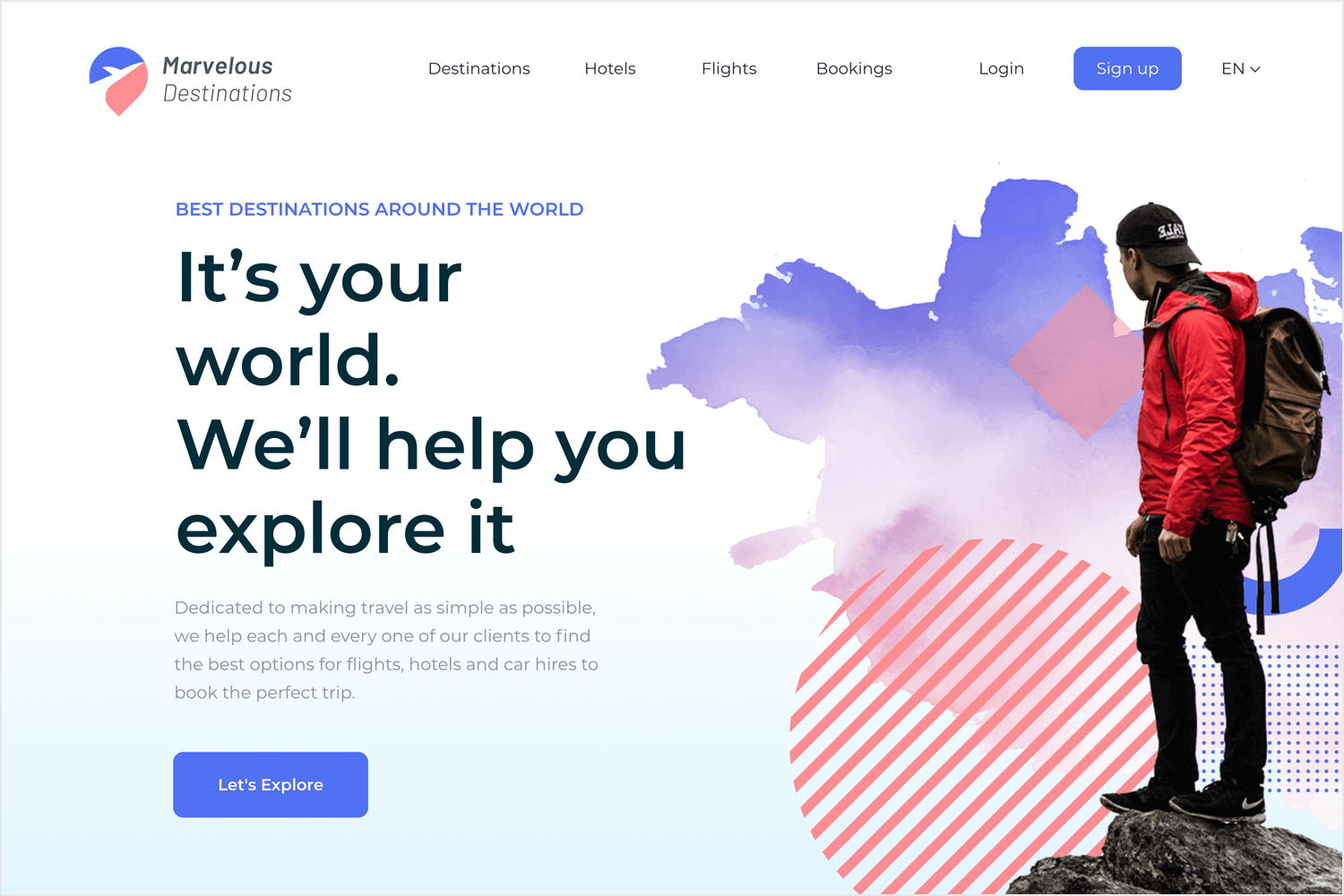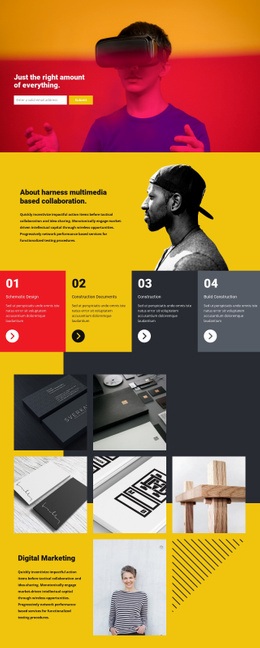Vital Website Design Features for Bringing In New Customers
Vital Website Design Features for Bringing In New Customers
Blog Article
Essential Principles of Site Style: Producing User-Friendly Experiences
By concentrating on individual requirements and preferences, developers can foster interaction and fulfillment, yet the ramifications of these principles prolong beyond simple performance. Understanding just how they link can substantially influence a website's overall effectiveness and success, triggering a more detailed examination of their individual roles and cumulative influence on individual experience.
Relevance of User-Centered Layout
Prioritizing user-centered style is vital for producing efficient websites that meet the requirements of their target market. This technique puts the customer at the leading edge of the layout process, making certain that the site not just operates well however also resonates with users on a personal level. By comprehending the individuals' actions, objectives, and choices, developers can craft experiences that cultivate interaction and fulfillment.

Additionally, embracing a user-centered layout approach can bring about boosted availability and inclusivity, providing to a diverse target market. By thinking about different user demographics, such as age, technological proficiency, and cultural histories, developers can develop websites that are inviting and functional for all.
Eventually, focusing on user-centered layout not just boosts customer experience however can likewise drive essential company outcomes, such as increased conversion prices and consumer commitment. In today's affordable digital landscape, understanding and prioritizing customer requirements is an essential success aspect.
User-friendly Navigation Structures
Reliable website navigating is commonly a vital factor in boosting user experience. User-friendly navigating structures allow customers to discover info promptly and efficiently, decreasing aggravation and enhancing involvement.
To create user-friendly navigating, developers ought to prioritize clearness. Tags must be familiar and detailed to users, staying clear of lingo or uncertain terms. A hierarchical framework, with main groups resulting in subcategories, can additionally help users in recognizing the partnership between various sections of the website.
In addition, incorporating aesthetic cues such as breadcrumbs can lead individuals with their navigating course, enabling them to conveniently backtrack if required. The incorporation of a search bar likewise enhances navigability, approving individuals guide access to content without needing to browse with numerous layers.
Flexible and receptive Layouts
In today's digital landscape, making certain that web sites operate effortlessly across numerous tools is necessary for user fulfillment - Website Design. Responsive and adaptive designs are 2 vital methods that enable this functionality, catering to the diverse variety of display dimensions and resolutions that individuals might encounter
Responsive layouts employ liquid grids and versatile images, permitting the site to automatically change its elements based upon the screen dimensions. This strategy offers a regular experience, where material reflows dynamically to fit the viewport, which is specifically valuable for mobile customers. By utilizing CSS media inquiries, developers can develop breakpoints that enhance the layout for different gadgets without the demand for separate styles.
Adaptive layouts, on the various other hand, make use of predefined layouts for certain display sizes. When an individual accesses the website, the server identifies the device and offers the suitable design, making certain a maximized experience for varying resolutions. This can cause much faster filling times and boosted efficiency, as each format is customized to the device's abilities.
Both flexible and receptive designs are essential for boosting individual interaction and fulfillment, ultimately adding to the site's overall effectiveness in fulfilling its objectives.
Regular Visual Hierarchy
Establishing a consistent aesthetic hierarchy is essential for assisting users via a site's content. This principle makes certain that information is offered in a way that is both engaging and user-friendly, permitting customers to quickly comprehend the product and navigate. A distinct hierarchy utilizes numerous layout elements, such as dimension, spacing, comparison, and shade, to create a clear difference in between different kinds of content.

Furthermore, constant application of these visual hints throughout the site fosters experience and trust fund. Customers can rapidly learn to recognize patterns, making their interactions extra efficient. Eventually, a strong visual power structure not only enhances user experience however additionally enhances overall website functionality, motivating much deeper engagement and assisting in the desired activities on a web site.
Accessibility for All Individuals
Access for all users is a fundamental facet of internet site layout that makes certain everybody, no matter their abilities or handicaps, can engage with and advantage from online content. Designing with availability in mind includes executing methods that fit varied user needs, such as those with aesthetic, auditory, motor, or cognitive impairments.
One essential standard is to stick to the Internet Material Availability Guidelines (WCAG), which provide a structure for creating accessible electronic experiences. This includes making use of enough shade contrast, giving message alternatives for pictures, and making sure that navigation is keyboard-friendly. Additionally, using receptive design techniques guarantees that websites operate effectively across various devices and screen sizes, better boosting ease of access.
One more vital factor is making use of clear, concise language that stays clear of jargon, making material comprehensible for all customers. Engaging users with assistive modern technologies, such as display visitors, calls for careful focus to HTML semiotics and ARIA (Easily Accessible Rich Internet Applications) roles.
Inevitably, focusing on access not only satisfies legal responsibilities however likewise increases the target market reach, promoting inclusivity and enhancing customer satisfaction. A commitment to access reflects a commitment to developing fair electronic settings for anonymous all users.
Verdict
To conclude, the crucial principles of web site style-- user-centered design, user-friendly navigating, responsive layouts, regular visual hierarchy, and access-- jointly add to the production of straightforward experiences. Website Design. By focusing on user demands and making certain that all people can successfully involve with the website, designers improve usability and foster inclusivity. These concepts not just improve user complete satisfaction however additionally drive positive business results, ultimately showing the vital value of thoughtful website layout in today's digital landscape
These methods provide very useful understandings right into customer assumptions and discomfort points, making it possible for developers to customize the site's functions and content appropriately.Efficient site navigation is commonly an important element in improving individual experience.Establishing a constant visual hierarchy is pivotal for leading individuals through a site's material. Inevitably, a solid visual power structure not just improves customer experience click for more yet additionally improves general website functionality, encouraging deeper engagement and assisting in the wanted activities on a web site.
These concepts not just boost user satisfaction however also drive positive organization outcomes, inevitably showing the crucial importance of thoughtful web site design in today's digital landscape.
Report this page